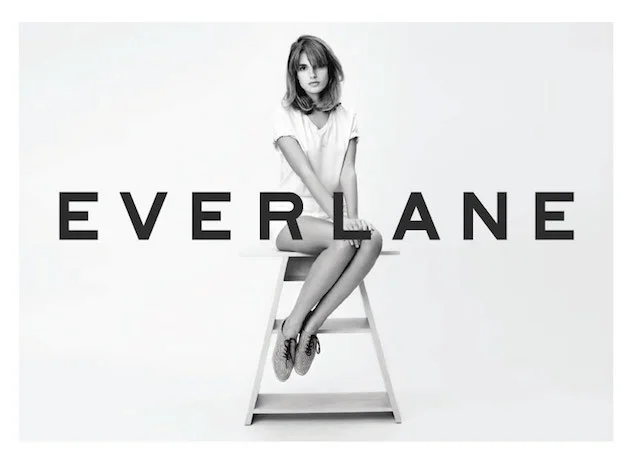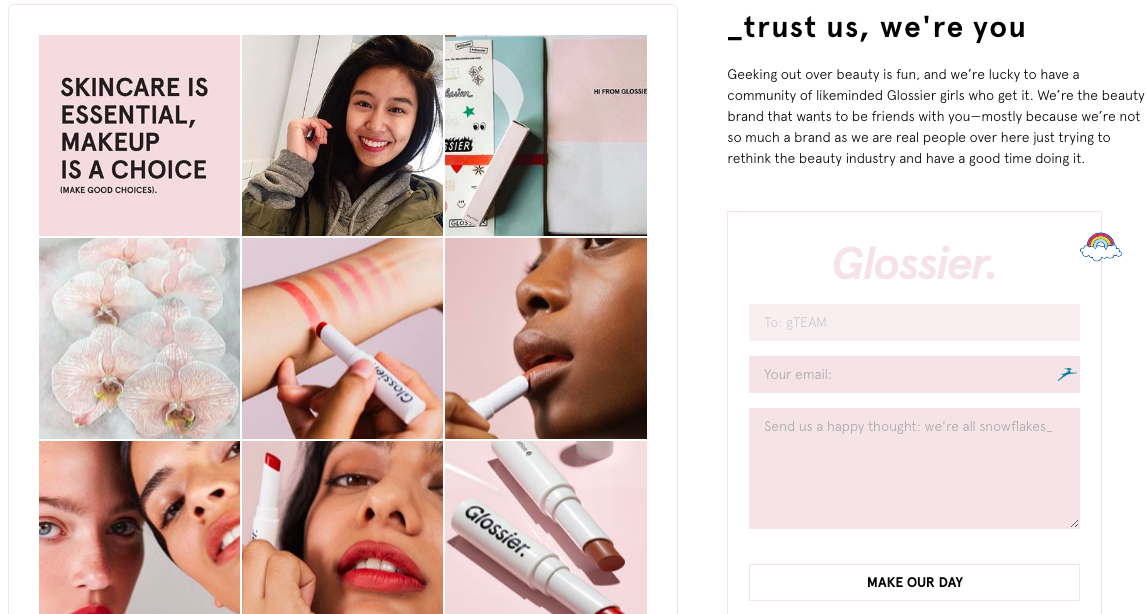I remember when I first started working in the real world, I needed to supplement my income ASAP. I was fresh out of college and the recession was in full effect. I was working at a fledgling PR job at $10/hour and started working with a small fashion e-com on the side. I don’t even remember how I landed this gig, but she was an awesome client, and for a 22-year-old, the money was great. I was able to develop my skills independently from my job. But the one thing that made working with her rewarding and that stood out to me, was her vision (as she was ahead of the game with her blog) and her willingness to be transparent about her life and journey.
Here’s an word for word excerpt from one of her quick emails:
“This business is 5.5 years a hobby…. And the last 8 months full time.
I am going through a divorce, with a waiver on alimony.
I gave away the house and the cars and walked out with only my business and 2 dogs.
So the last 8 mths, I’ve been pushing it really hard…and I need all the help I can get.
My budget will be limited but I am not going to skimp on PR either. I know how important it is.”
Not only was her story well-integrated into her blog posts and ‘about’ pages, she was transparent with her customers. The above is what real transparency looks like. It made me WANT to work with her and be a part of what she is doing. As well as cultivate a long-term working relationship, which we did. I knew I was greatly helping her build her business and I understood this was a make or break for her.
Transparency: What it means to marketing and the winners
The concept of transparency in marketing has been a hot button for the last few years. And since I’m hungry and it’s lunchtime, I thought this stat would be appropriate.
“According to the 2016 Food Revolution Study, 94 percent of consumers say transparency is important to their purchase decisions. Empowered by choice and information, customers have a greater expectation—and demand—for transparency from brands.”
But this goes beyond food. Bare with me.
Let’s first define transparency. In the words Merriam-Webster:
-able to be seen through
-easy to notice or understand
-honest and open : not secretive
Now that we clearly defined what that means, maybe your gears have really started grinding. There are a few fashion and beauty brands that are killing it using transparency in their marketing and is integral to their brand and storytelling.
When customers perceive you to be honest and open, they will trust you, and start buying into you and will buy from you. Fashion brand, Reformation, known for their beautifully ‘killer’ dresses ‘that don’t kill the environment’ do a great job of articulating that they mostly manufacture in Los Angeles. Their bio reads,
“We source sustainable fabrics and vintage garments while incorporating better practices throughout our supply chain to make beautiful styles at a fraction of the environmental impact of conventional fashion. It is our mission to lead and inspire a sustainable way to be fashionable.”
And they go in-depth on their site, breaking down their sustainable practices. Like, who doesn’t want to buy from them? Not me! I never resist their end of year sale.
Everlane is another one of my favorites who is doing it right and is the basis of their business. It is literally the reason why I buy my basics from them. And not to mention beauty brand, Glossier and its incredible messaging and the illustration of their conception to launch.
Patagonia, the long-standing outdoor clothing and gear has always been committed to sustainability and did an excellent job with their Fair Trade Campaign, asking people “how is your clothing made?”. They used this campaign to get people thinking about how/where their clothing is made to create a stronger demand for Fair Trade products. The inspirational campaign video received 107,000 Facebook views, 1,400 likes and 62 comments in one week. Wow.
Believe it or not, brands like Zara, Levi’s and H&M are also using transparency to earn customers trust and tell their story.
The need to get-it-togethers
Now, let’s discuss who should be doing this, and either is not doing it well or not doing it at all. Studies have shown luxury brands index very low in transparency. Customers are more savvy about how and when they shop. These days, they are not going to buy a handbag just because it’s Chanel. They want to feel a connection. They want to know how the quilted double flap bag is made, who the designers are, and where does it go after design. Most luxury brands, of course, want to keep this private due to various reasons I won’t get into on this particular post, but this is a huge area of opportunity for growth.
It’s also a missing piece in a lot of e-commerce businesses. How many of us find that perfect top on a mighty, but small online shop, but have no clue who is behind the site, where it’s shipping from, etc.? This is a huge miss, as most customers won’t shop at an online store they don’t feel secure buying from. With so much competition in online retail, it’s important to make building authentic relationships with customers a priority. And show there are humans behind the business.
But you don’t have to be a “sustainable” or “eco-conscious” brand to be transparent. There are various ways to infuse transparency in your storytelling and branding. But first, you have to get over your fears of letting your customers/audience see what’s behind the scenes. Most of us can be quite private in our personal lives and want to keep some things to ourselves, especially with our business. But it’s important to open up at the right time in the right way to the right audience.
Here are a few different ways to be more transparent with your customers.
1. Give your customers an office or studio tour. Again, it’s about going behind the scenes, meeting staff and getting a feel for the vibe. What’s the story behind you creative space? Get into the details! Create a blog post around this with beautiful photos and a video that lives on your website. State your values as a company and keep reiterating this throughout the content.
2. If you’re proud of your manufacturers, and its business practices are all above board (which I hope this is the case for all of the brands reading this), take your customers on a tour. Show them how things are made. Give them a history of the manufacturer. How did you begin working together? It’s an easy and fun story to tell.
3. Create a campaign around your hero product. Show and tell how it is conceptualized or designed, produced, etc. over a series of videos and blog posts that is distributed via your social channels. Remember distribution is one of the most important parts of this game (a more detailed post on that to come!).
Let’s summarize this
In order to build trust, sincerity, and loyalty with customers, you have to pull the shades back and show and tell what you’re proud of about your business. Show your customers the nitty gritty. Use video and written content to tell the story.
What are your thoughts on transparency? Do you have additional tips to nailing transparency? Share in the comments.

